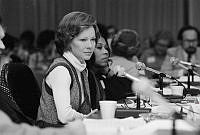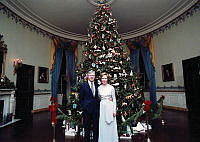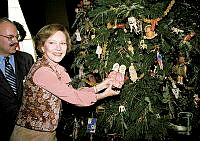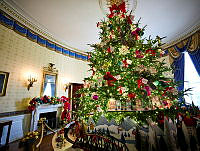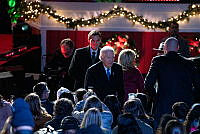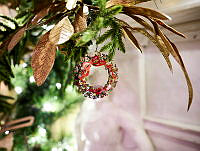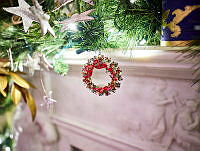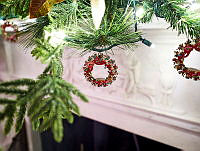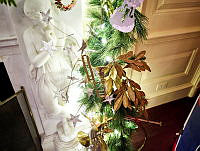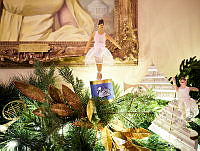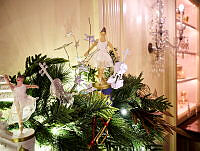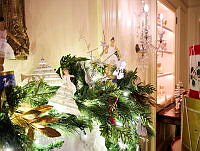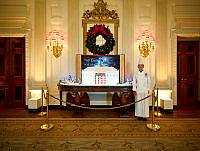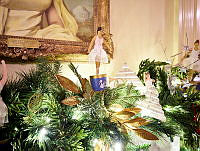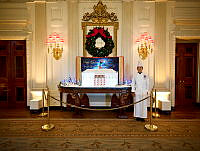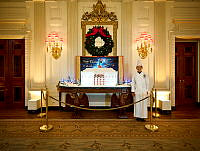Harriet Lane

Born to parents Elliott T. Lane and Jane Buchanan Lane on May 9, 1830, in Mercersburg, Pennsylvania, Harriet Lane lost both of her parents by eleven. Jane’s brother, then-Senator James Buchanan of Pennsylvania, became Harriet’s legal guardian. Harriet attended boarding school, first in Pennsylvania and later in Virginia and Washington, D.C., and lived with her uncle at his Wheatland estate in Lancaster, Pennsylvania. She later traveled abroad with Buchanan while he served as Minister to Great Britain.1
When President James Buchanan moved into the White House in 1857, he was in his sixties and a lifelong bachelor. Thus, the role of first lady unsurprisingly fell to Lane. Then in her twenties, Lane brought youth and vitality to the White House, easing political tensions in the capital with a business-as-usual approach to entertaining.2 Lane became a celebrity, as Americans, consumed news and gossip about the first lady like she was a star of the stage. She signed autographs for charity, christened boats, and acquired free samples of the latest fashions of the day.3 At the White House, Lane oversaw a refurbishment of the Blue Room and presided over several important foreign visits. After Japan reopened trade with the United States in the 1850s, a delegation of Japanese envoys visited Washington, D.C. in May 1860.4 She also oversaw a visit from Albert Edward, Prince of Wales, the future King of the United Kingdom of Great Britain and Ireland.5
In 1861, as the United States appeared on the brink of a civil war, James Buchanan and Harriet Lane left the White House for Wheatland. Lane became the guardian of her uncle’s legacy, overseeing the creation of a memorial to him in Washington, D.C., donating his portrait to the White House, and managing his Wheatland estate and the publication of his papers. Lane also traveled the world, collected art, and fell in love.6 She married Henry Elliot Johnston on January 11, 1866.7 They moved to Baltimore, Maryland, and welcomed two sons, James Buchanan Johnston and Henry Elliot Johnston Jr., in 1866 and 1870, respectively.
Tragically, both children died of rheumatic fever within one year of each other, and her husband succumbed to pneumonia shortly after. Lane channeled her grief into philanthropy, establishing the Harriet Lane Home for Invalid Children (now the Johns Hopkins Children’s Center) in their memory; she also donated her art collection toward the creation of a national gallery of art and bequeathed a large sum of money to establish a school for boys, now called St. Albans School, in Washington, D.C.8 She died on July 3, 1903.
Footnotes & Resources
- Sarah Fling, “Harriet Lane; American Princess,” White House Historical Association, https://www.whitehousehistory.org/harriet-lane.
- Mary Jane Windle, Life in Washington and Life Here and There (Philadelphia: J. B. Lippincott & Co., 1859; Clemmer, Ten Years in Washington: Life and Scenes in the National Capital, as a Woman Sees Them (Hartford, CT: A.D. Worthington and Co., 1874); Sarah Fling, “Harriet Lane; American Princess,” White House Historical Association, https://www.whitehousehistory.org/harriet-lane.
- “Books, Artists, Authors, & c.,” Alexandria Gazette, December 17, 1859; “Launch of the Sloop-of-War Lancaster,” The Washington Union, October 22, 1858; “Gossip for the Ladies,” Frank Leslie’s Weekly, February 13, 1858.
- Joel D. Treese, “The Japanese Mission of 1860,” White House Historical Association, https://www.whitehousehistory.org/the-japanese-mission-of-1860.
- Kinahan Cornwallis, Royalty in the New World (New York: M. Doolady, 1860); Stephanie Celiberti, “A Royal Association: Chronicling Harriet Lane’s Connection to the Royal Family,” LancasterHistory, https://www.lancasterhistory.org/a-royal-association-chronicling-harriet-lanes-connection-to-the-royal-family/.
- Homer T. Rosenberger, "Harriet Lane Johnston and the Formation of a National Gallery of Art," Records of the Columbia Historical Society, Washington, D.C, 69/70 (1969): 399-442; Karis Lee, “The Buchanan Statue Debate: A Memorial Fifteen Years in the Making,” Boundary Stones, https://boundarystones.weta.org/2020/03/30/buchanan-statue-debate-memorial-fifteen-years-making.
- Stephani Celiberti, “Harriet Lane Johnston: A Lifetime of Loss,” LancasterHistory, https://www.lancasterhistory.org/harriet-lane-lifetime-of-loss/.
- “Our Founder,” St Albans School, https://www.stalbansschool.org/about/history/our-founder-harriet-lane-johnston; Stephani Celiberti, “Harriet Lane Johnston: A Lifetime of Loss,” LancasterHistory, https://www.lancasterhistory.org/harriet-lane-lifetime-of-loss/.




















